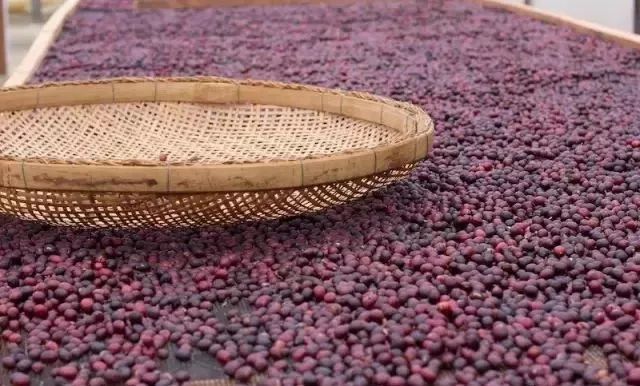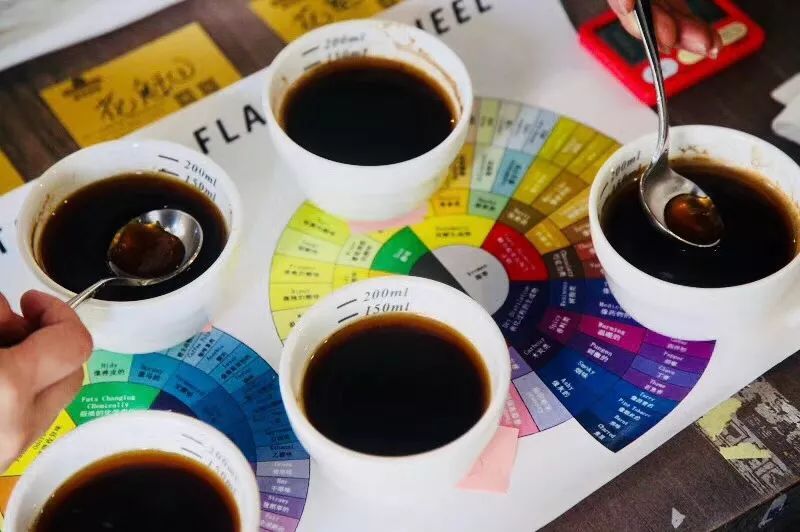Coffee Tasting-What are the 7 elements and 5 coffee flavors that determine coffee flavor?
Professional coffee knowledge exchange more coffee bean information please follow the coffee workshop (Wechat official account cafe_style)
For beginners of coffee taste, sour taste is a difficult item to taste, and they may generally agree with coffee with a particularly bitter taste, which may lead to cognitive differences between practitioners and final consumers. The judgment on the taste of coffee is subjective. As far as coffee is concerned, some of the more unusual flavors are like fruit tonality, so it is more difficult to judge: how sour is this coffee bean? Is it sour and pleasing? High-quality sour taste will actually have a refreshing, juicy feeling.
In terms of taste, does this coffee have a light, delicate, tea-like taste? Or is there a rich, creamy, thick quality? Again, not the more everything, the better. Low-quality coffee beans often have a thick taste and low acidity, but they are usually bad.
"how can I drink the aroma of flowers and fruits of coffee? "when I was thinking about it, there were a lot of factors that might affect the taste of a cup of coffee.
We often emphasize the importance of origin and bean species to the taste of coffee. For example, African boutique beans have typical flower and fruit aromas, but they are different in strength; for beans, for example, the flower and fruit aromas of Rose Summer are more obvious.

In fact, the processing technology of raw coffee beans can not be ignored. Through raw bean treatment, such as sun exposure and washing, coffee can be changed from fruit to dried raw beans and bagged for export. Different treatment processes will bring completely different quality and taste characteristics to the coffee.
The most common treatment processes are sun exposure and water washing:
Sun treatment is mostly used in areas where water is scarce, such as Ethiopia and Yemen, where temperatures are high and sunlight is abundant. But in Central and South America, such as Honduras and Guatemala, because the climate is humid during the picking season, insufficiently dried fruits may become moldy, so wash them with water.
If handled properly, tanned coffee can have a rich fruity flavor, which is very rare in washed coffee, such as blueberry and strawberry, and often brings unexpected surprises. The fruit flavor of sun-cured coffee actually comes from the drying process of the fruit. because it is not separated from the peel and pulp, raw beans will absorb the essence, which explains why the taste of sun-cured coffee is so rich and complex, and sometimes with red wine flavor. and taste more mellow, lower acidity.
But in contrast, the risk of tanning is greater. If it is rotten and fermented during the drying process, the coffee will have a rotten sour or moldy taste, such as Uganda and Myanmar, while Ethiopia is like a sun-dried coffee as sweet as syrup or jam with a fruity aftertaste. The water-washed coffee is more reliable and stable, and the treated coffee has a stronger sour taste and brighter taste.

Coffee tasting determines 7 elements of coffee flavor and 5 coffee flavors
Among the five senses, we mainly use our sense of smell and taste when drinking coffee. Among them, the sense of smell can distinguish more than 2000 kinds of subtle aroma, and the taste can taste sweet, sour and salty according to the position of the tongue.
It is the interaction of these factors that create a variety of flavors.
A cup of coffee that we like to drink also combines these factors, showing us a variety of aromas and flavors.

"five words to describe the taste of coffee"
1) sweetness
Coffee that is tasted in a liquid of melted sugar. Associated with chocolate, caramel and fruit aromas.
2) sour
A word used to describe a sharp, tongue-tingling coffee similar to vinegar.
It is also used to describe fermented coffee.
It should be noted that the sour taste is different from the Hawthorn flavor, so don't get confused.
3) sour taste (Acidity)
Sour coffee felt in fruit, that is, used to describe refreshing coffee.
Coffee with proper mountain flavor is generally rated as good coffee.
Sour taste (acidity) is different from the taste of sour in fermented food.
4) bitter taste
Caffeine, specific alkaloids and other ingredients "melt" the taste in the water.
Without overdoing it, the bitterness in the coffee is needed, depending on how well the beans are roasted.
5) salty taste
It's coffee that feels salty.

"7 conditions that determine the taste of coffee."
1) Coffee bean varieties
Generally speaking, Arabica coffee with strong flavor and rich aroma is classified as a higher-end coffee category.
However, Robusta also has good coffee, so it's best not to be biased.
Arabica: the most popular variety of coffee. Has less caffeine than Robusta.
Robusta: a coffee variety of African Congo origin.
2) freshness
Coffee beans stored for a long time will give off an unpleasant smell, without saying that all their moisture will be lost, and the taste will not be very good.
Although fresh raw beans are emerald green, those that have been stored for a long time are dark yellow.
Even if it is a good coffee bean of high grade, check how long it took after the bean was harvested, get the time of this grade, and other information.
3) baking degree
The so-called baking actually refers to the degree to which the raw beans are fried.
Generally speaking, light baking is sour, while deep baking is bitter.
It can be said that the first step in determining the sour and bitter taste of coffee is the degree of roasting.

4) degree of grinding
The degree of grinding of coffee beans also affects the taste of coffee.
Coffee beans with coarse grind can flow out faster than beans with fine grind.
The time of contact with water is short, and the sour taste will become stronger.
Reducing the amount of coffee beans will also increase the sour taste of coffee because of reduced contact time with water.
5) matching
Mixing the coffee beans of which country in what proportion and stir-frying which varieties at what roasting degree will change the taste of the coffee. This is the match.
This "process" can not only add a variety of flavors to sour coffee, but also turn bitterness into sweetness.
6) Water
Water is a very important factor in extracting a cup of coffee.
Some experts argue that water affects about 90% of the taste of coffee.
For example, even if the same kind of coffee bean is used, the taste will be different depending on what kind of water is used.
7) temperature
In addition, the temperature of the water can not be ignored. The ideal temperature is about 8992 degrees.
Experts suggest that if you grind rough coffee, it is best to extract it at high temperature.
If the temperature is low, the sour taste will increase, and if the bitter taste is too high, the bitter taste will become stronger.
Therefore, the temperature of the water can be used to neutralize coffee beans with strong sour taste.
(note: the source network of the picture in the article; the copyright of the picture belongs to the original author)
Important Notice :
前街咖啡 FrontStreet Coffee has moved to new addredd:
FrontStreet Coffee Address: 315,Donghua East Road,GuangZhou
Tel:020 38364473
- Prev

What is a cup test? How to carry out cup test and score? -detailed scoring criteria for SCAA Cup test items
Professional coffee knowledge exchange more coffee bean information please follow the coffee workshop (Wechat official account cafe_style) cup test what do you need? The tools needed for cup testing are very simple: grinder, scale, thermometer, cup, spoon, the ratio of coffee beans to water is also specified: the ratio of water: 8.25g coffee beans with 150ml water, the water temperature should be 92.2-94.4C
- Next

Evaluate the regional characteristics of the two major coffee producing areas: [Africa] and [America].
In the preface, there are some vague definitions of fine coffee, such as variety, treatment and quality identification, but there are also some very clear definitions: only in the most favorable microclimate and soil and water can we grow high-quality coffee with unique flavor. Coffee belt coffee trees are only suitable for growing in the tropics or subtropics, so the zone between latitude 25 degrees south and north is the most suitable for growing coffee. And this...
Related
- How did the Salvadoran coffee industry develop in Central America?
- What exactly does the golden cup extraction of coffee mean?
- The Origin of Coffee flower
- [2023 Starbucks World Earth Day] there are more meaningful things besides free Starbucks coffee!
- What kind of coffee is there in Spain? 9 Flavors of Spanish Coffee
- Aromatic African coffee| Kenya's coffee culture and historical production area
- Liberica Coffee Bean knowledge: the characteristics of Liberian Coffee beans of the three original species of Coffee beans
- The origin and formula of Spanish latte introduces the taste characteristics of Bombon coffee in Valencia, Spain.
- How to adjust the solution of over-extracted coffee
- What is the tasting period of coffee beans? What is the period of coffee and beans? How should coffee wake up and raise beans?

